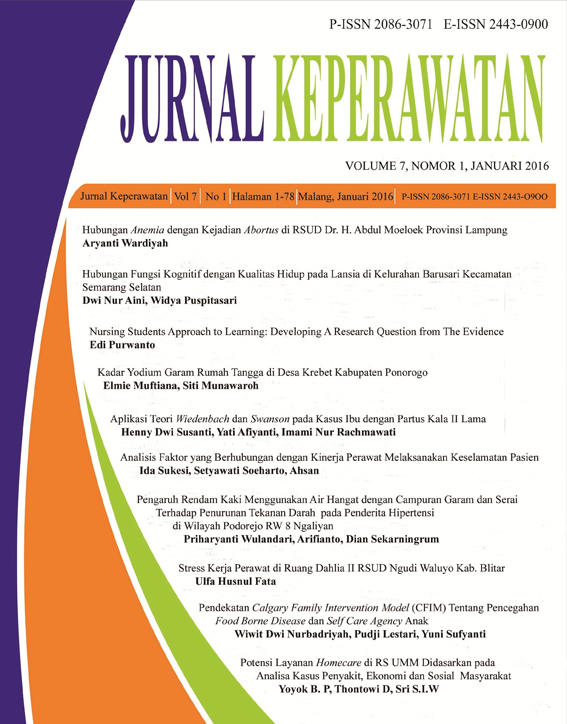Calgary Family Intervention Model Approach ( CFIM ) Prevention of Food Borne Disease and Self Care Agency for Children
DOI:
https://doi.org/10.22219/jk.v7i1.3920Keywords:
Model of calgary, food borne disease, child’s self care agencyAbstract
Food borne disease (FBD) is a disease caused by consumption of contaminated food. The problem is, school aged children are vulnerable Food borne disease because of household food contamination. This indicates the family hygiene as a food handler mainly mother during preparing the food still need to be improved. The study design used pre experiment one group pre and post test design with a sample of 35 respondents namely, 4th grade students with their parents and 5th grade students with their parentsin Jatirejoyoso Kepanjen Primary School. Demographic data, CFAM (Calgary Family Assessment Model), knowledge, attitudes, practices family and children's self-care agency in PHBS at school were used.The results was an increase in knowledge and attitudes of families, family practice and self child care agency did not change after the intervention CFIM for 4 sessions. CFAM on the functional components of the daily activity was lacking mostly, thus affecting the unchanged practice. While children self-care agency was affected by school environment such as affordability of snacks. Health professionals are expected to optimize School Health Unit program to provide education about clean and healthy living behaviors at the school community (students, teachers and school employees) and family assistance through a cadre.Downloads
Download data is not yet available.
Downloads
Published
2016-02-28
Issue
Section
Articles
License
Authors who publish with this journal agree to the following terms:
- Authors retain copyright and grant the journal right of first publication with the work simultaneously licensed under a Creative Commons Attribution-ShareAlike 4.0 International License that allows others to share the work with an acknowledgment of the work's authorship and initial publication in this journal.
- Authors are able to enter into separate, additional contractual arrangements for the non-exclusive distribution of the journal's published version of the work (e.g., post it to an institutional repository or publish it in a book), with an acknowledgment of its initial publication in this journal.
- Authors are permitted and encouraged to post their work online (e.g., in institutional repositories or on their website) prior to and during the submission process, as it can lead to productive exchanges, as well as earlier and greater citation of published work (See The Effect of Open Access).

This journal is licensed under the a Creative Commons Attribution-ShareAlike 4.0 International License.














